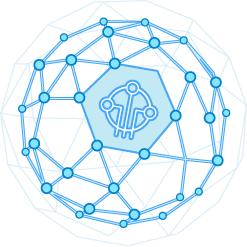AWS News Blog
AWS IoT – Now Generally Available
|
|
A few months ago, I wrote about AWS IoT Core (see AWS IoT – Cloud Services for Connected Devices) and talked about how we are working to make sure that AWS is well-equipped to support many different types of IoT devices and applications. At that time we launched AWS IoT Core in beta form and invited interested developers to sign up and to start getting experience with the service.
We built IoT Core because connected devices are proliferating. They are in your house, your car, your office, your school, and perhaps even in your body! Like some of our more advanced customers, we have been building systems around connected devices for quite some time. Our experience with Amazon Robotics, drones (Amazon Prime Air), the Amazon Echo, the Dash Button, and multiple generations of Kindles has given us a well-informed perspective on how to serve this really important emerging market. Behind the scenes, AWS services such as AWS Lambda, Amazon API Gateway, Amazon DynamoDB, Amazon Kinesis, Amazon Simple Storage Service (Amazon S3), and Amazon Redshift provide the responsive, highly scalable infrastructure needed to build a robust IoT application.
When we talked to our customers and to our own engineers, we learned quite a bit about the pain points that add complexity and development time to IoT applications. They told us that connecting devices to the cloud is overly complex due to the variety of SDKs and protocols that they need to support in a secure and scalable fashion. Making this even more difficult is the fact that many devices “feature” intermittent connectivity to the Internet, even as application logic shifts from the device to the cloud. Finally, the sheer volume of data generated by the sensors attached to the devices mandates a Big Data approach to storage, analytics, and visualization.
These are, to be sure, some steep requirements. As you can read in my post above, we have designed IoT Core with all of them in mind.
Now Available
I am happy to be able to announce that the beta period is over and that AWS IoT Core is now generally available. Many AWS customers are already building apps and creating new businesses around IoT. Here are a couple of examples:
- The Philips HealthSuite digital platform collects, analyzes, and stores 15 petabytes of patient data (case study).
- Scout Alarm uses AWS IoT Core to support an ever-growing set of self-installed, wireless home security systems, allowing them to focus on the user experience instead of on the infrastructure.
During the beta, we added a pair of important features to IoT Core:
- AWS Mobile SDK for iOS now supports AWS IoT (Android support is in the works).
- IPv6 support for exchanging messages between devices and the AWS IoT Device Gateway.
IoT Use Cases
Earlier this week I sat down with a couple of members of the IoT team. They told me that our customers are planning to use IoT Core to support many industries and use cases! Here’s a sampling:
 Agriculture
Agriculture- Cars & trucks
- Consumer devices
- Gaming
- Home automation
- Logistics
- Medical
- Municipal infrastructure
- Oil & gas
- Robotics
Get Started Today
To learn more about IoT Core and how you can put it to use in your environment, hop on over to the Getting Started page. You may also want to read the AWS IoT FAQs and study the AWS IoT Documentation.
— Jeff;
